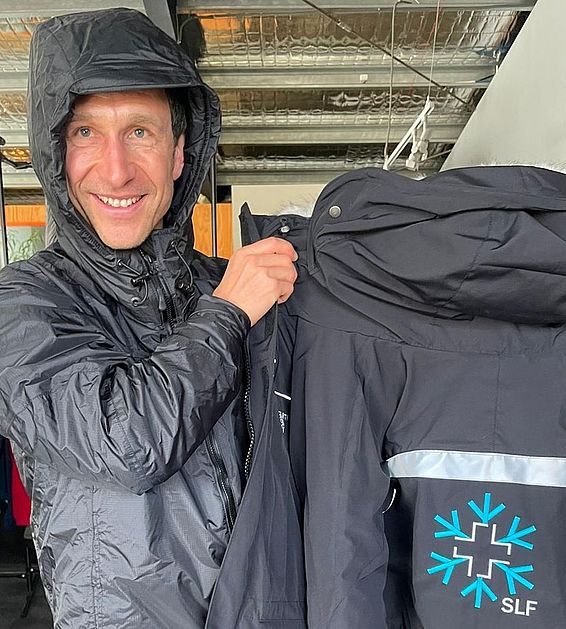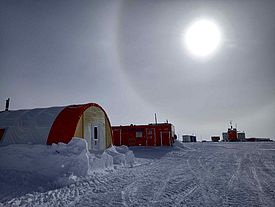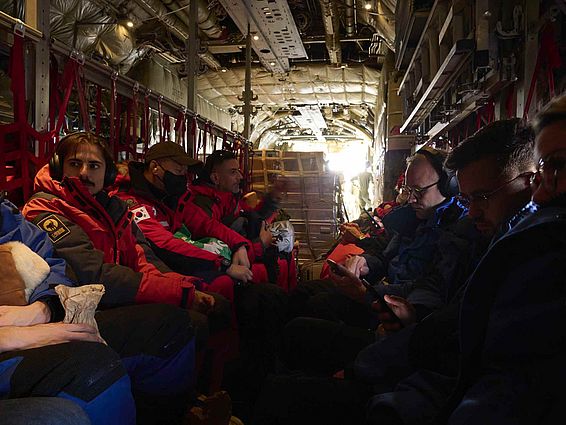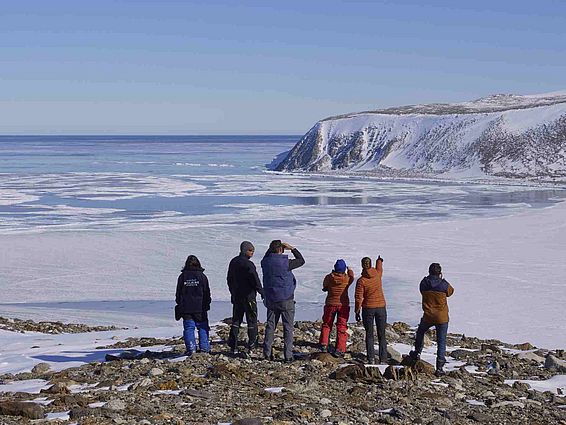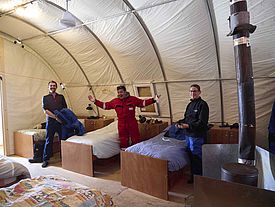07.12.2023 | Matthias Jaggi | SLF News
SLF technician Matthias Jaggi reports on his expedition to Antarctica. Part one: the arrival.
Hi everyone! I'm Matthias Jaggi, a technical staff member in the Snow Physics group, and I'm getting to spend a second southern summer at the French-Italian research station Dome C in Antarctica. I'll be setting up an experiment with the aim of better understanding how snow metamorphism affects the redistribution of stable oxygen isotopes. But first things first.
The research station is located on an ice sheet over 3 kilometres thick, of which the top few metres are of course snow. As the depth increases, the snow compacts into firn and ultimately into ice. Annual precipitation levels in the form of snow are very low here on the East Antarctic Plateau, which means that the lowest metres of the ice sheet are very, very old. The ice sheet therefore provides a perfect record of the climate. It is calculated that the deepest ice brought to the surface by ice core drilling is around 1.5 million years old.
The chemical composition of these ice cores varies according to the drilling depth. We can chart this on a timeline, which allows us to see (very roughly!) which substances or changes in the concentration of substances led to global warm or cold periods. Integrated into climate models, these findings enable estimates of future climatic changes too. One of these "substances" in the ice cores are the stable oxygen isotopes, which occur in different ratios depending on the average temperature of the oceans and atmosphere. Snow consists of water, and water is a molecule made up of hydrogen and oxygen. Accordingly, every snowflake that falls from the sky effectively carries information about average temperature conditions on earth. However, powder snow does not remain in that form for long as snow is constantly changing. Snow crystals in the snowpack disappear and others re-form. This process is known as metamorphism. As a result, the oxygen isotopes are also redistributed. We want to understand exactly how this happens so that we can better interpret the isotope signals in the ice core.
Now for a bit more about the journey. I'm glad I didn't miss the flight from New Zealand to Antarctica. For some reason I wasn't properly entered into the IPEV (French Polar Institute Paul-Émile Victor) system and didn't receive certain information. I made several subsequent requests but to no avail, and didn't even know the exact day of the flight. A French colleague then got hold of my phone number and asked where I was, so I left my accommodation in a hurry so as not to miss any more information. The flight to Italy's Mario Zucchelli Station on the Antarctic coast took almost eight hours, in an Italian military Lockheed C-130 Hercules.
In early summer, when the ice in Terra Nova Bay in the Ross Sea is still at least two metres thick, the aircraft can land directly on it. The coastal stations are, among other things, a hub and transshipment point for the onward journey into the Antarctic interior. You can spend several days at one of these stations, depending on the weather and the availability of smaller aircraft such as the converted DC-3 (Basler BT-67) or the Twin Otters.
Of course, this also has its advantages as it gives you a chance to explore the surrounding area, within the permitted limits. Unfortunately this year the penguin colonies were off limits due to bird flu, but the hilly, granite-like landscape, the open water far out to sea, the thawing ice belt with its many shades of bluish white and the glaciers falling into the sea in the background are more than enough to explore. Not forgetting the Italian hospitality and a real portafilter machine for espressos, and even a gelato machine serving gelato cioccolato fondente – crazy!
The first flight to Dome C was essentially a cargo flight with an additional six seats for passengers. The group from EPICA, which will be drilling for the oldest ice, wanted to keep the flights coordinated, so I was fortunate enough to be on the first flight. When we arrived at Dome C, the first thing we had to do was a PCR test for Covid. All negative. Even so, we had different meal times and were billeted in a heated tent next to the main station. Because of the thinner atmosphere over the poles, the altitude of Dome C is equivalent to 4,000 metres in the Alps. That's enough to give some people altitude sickness (it happened to me the first time) and the combination of altitude sickness and Covid can have serious consequences. The station operators therefore try to keep newcomers somewhat apart from everyone else to start with. And sure enough, on the second day of our quarantine, the man in the next bed to mine tested "light positive", which extended our quarantine period by another three days. The poor guy was then moved to the proper quarantine area, a heated shipping container with a tiny window.
While quarantine is definitely a bit boring, it has the big advantage that I can't overexert myself physically, which reduces the risk of altitude sickness. Tomorrow's PCR test will show whether we can start on our work and experiments. To be continued…
